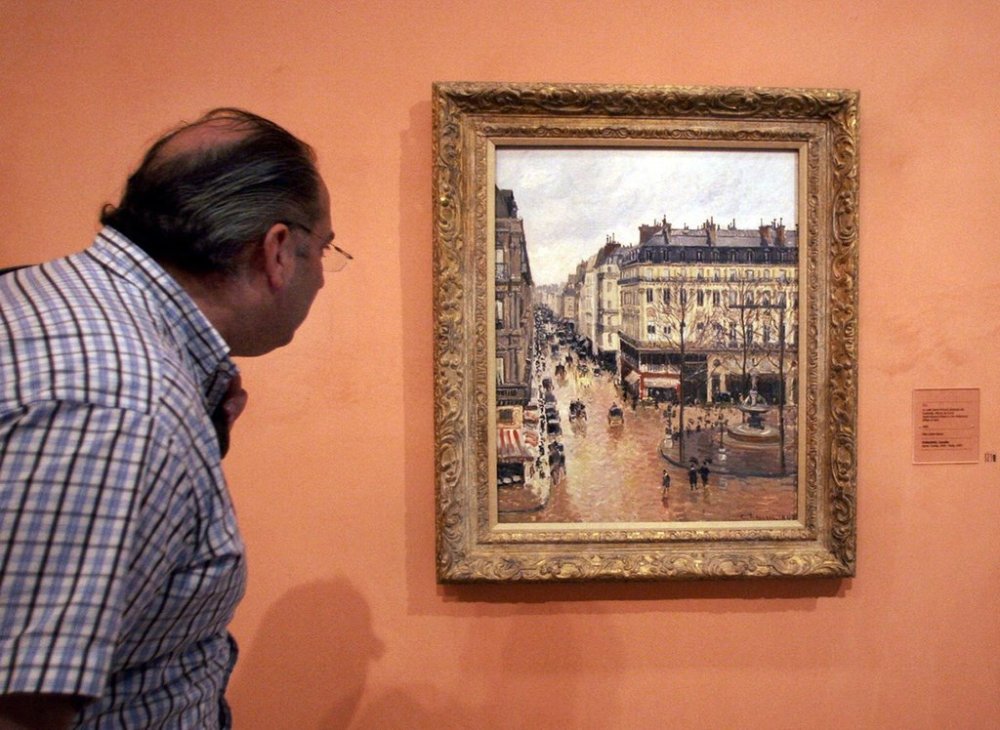The US high court revives a case around Nazi-looted impressionist painting in Spanish museum
Advertisement
Read this article for free:
or
Already have an account? Log in here »
We need your support!
Local journalism needs your support!
As we navigate through unprecedented times, our journalists are working harder than ever to bring you the latest local updates to keep you safe and informed.
Now, more than ever, we need your support.
Starting at $15.99 plus taxes every four weeks you can access your Brandon Sun online and full access to all content as it appears on our website.
Subscribe Nowor call circulation directly at (204) 727-0527.
Your pledge helps to ensure we provide the news that matters most to your community!
To continue reading, please subscribe:
Add Brandon Sun access to your Winnipeg Free Press subscription for only
$1 for the first 4 weeks*
*$1 will be added to your next bill. After your 4 weeks access is complete your rate will increase by $4.99 a X percent off the regular rate.
Read unlimited articles for free today:
or
Already have an account? Log in here »
Hey there, time traveller!
This article was published 10/03/2025 (207 days ago), so information in it may no longer be current.
MADRID (AP) — The fate of a French impressionist painting once stolen by the Nazis from a Jewish woman is in question once again after the U.S. Supreme Court on Monday revived a case that could decide its ownership.
At issue is whether the painting, Camille Pissarro’s “Rue Saint-Honoré in the Afternoon, Effect of Rain,” should remain in the hands of a prominent Spanish museum where it now hangs — or with the descendants of the woman.
On Monday, the Supreme Court said the case should be reconsidered under a California law passed last year that aims to strengthen the claims of Holocaust survivors and their families seeking to recover stolen art. In doing so, the justices overturned previous lower court decisions that sided with the Thyssen-Bornemisza museum in Madrid.

The oil painting from 1897 depicts a rainswept Paris street and is estimated to be worth tens of millions of dollars.
Its owner was once Lilly Cassirer Neubauer, a German Jew who surrendered the painting to the Nazis in order to get visas for herself and her husband to leave Germany.
The painting changed hands a number of times for years, traveling to the United States where it spent 25 years with different collectors before it was bought in 1976 by Baron Hans Heinrich Thyssen-Bornemisza of Lugano, Switzerland. He owned it until the 1990s, when he sold much of his art collection to Spain.
On Monday, Neubauer’s great-grandson and California resident David Cassirer said in a statement that he was thankful to the U.S. high court “for insisting on applying principles of right and wrong.” He took over the family’s fight for the painting after his father Claude Cassirer — who had first discovered that the painting was not lost but on display in the Madrid art museum — died in 2010.
A lawyer representing the Thyssen-Bornemisza Collection Foundation said that the foundation would continue working toward confirming the painting’s ownership “as it has for the past 20 years.”
Thaddeus Stauber also said the U.S. high court’s order provided a first opportunity to examine the new California law and what effect it could have on the museum’s “repeatedly affirmed rightful ownership.”
